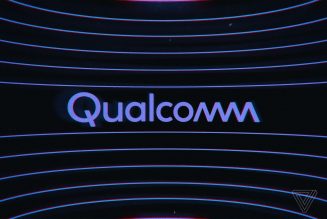/cdn.vox-cdn.com/uploads/chorus_asset/file/22775526/Facebook_ads.jpg)
Just when I thought the relationship between Apple and Meta couldn’t get more hostile, here we are.
On Monday, Apple quietly updated its App Store rules to require that iOS developers use in-app purchases — and thereby give Apple 30 percent — on “sales of ‘boosts’ for posts in a social media app.” This primarily affects Facebook and Instagram, which let people pay to boost the reach of their posts. It’s the first time Apple has directly taxed advertising in iOS apps.
Meta, of course, isn’t happy. Company spokesperson Tom Channick sent The Verge the following statement: “Apple continues to evolve its policies to grow their own business while undercutting others in the digital economy. Apple previously said it didn’t take a share of developer advertising revenue, and now apparently changed its mind. We remain committed to offering small businesses simple ways to run ads and grow their businesses on our apps.”
“Apple continues to evolve its policies to grow their own business while undercutting others in the digital economy”
Paying to boost posts is a common feature across not just Meta’s apps but other social apps like Twitter and TikTok. The difference for Facebook and Instagram is that they currently don’t use Apple’s in-app purchase system for boosting posts while Twitter, TikTok, and others do. I’m told that several years ago, Apple pressured Facebook to start routing these boosted post payments through the App Store, and Facebook resisted. (You can read more about that in this great story by Salvador Rodriguez at The Wall Street Journal.)
Still, Meta is accurate to say that this policy on paid boosts is, at least publicly, an about-face from Apple. Last May, during the Epic v. Apple antitrust trial, App Store boss Phil Schiller testified that the company had never taken a cut of iOS developer ad revenue. Going forward, that won’t be true anymore.
Based on my conversations with Meta employees, the new policy shouldn’t have a material impact on the company’s revenue. But there is concern about the precedent set, and that Apple will eventually require the same rule for Meta’s standalone ads manager app. Thanks to Apple’s current logic, that app is currently exempt from having to use in-app purchases for boosts because the ads that are bought aren’t displayed in the app itself.
In a statement shared with The Verge, Apple spokesperson Peter Ajemian downplayed the introduction of the new rule, saying that the App Store has long taken a cut of digital goods and services.
“For many years now, the App Store guidelines have been clear that the sale of digital goods and services within an app must use In-App Purchase,” Ajemian said in the statement. “Boosting, which allows an individual or organization to pay to increase the reach of a post or profile, is a digital service — so of course In-App Purchase is required. This has always been the case and there are many examples of apps that do it successfully.”
(That doesn’t explain why Apple felt the need to update its policy at all, but alas.)
Meta’s biggest advertisers won’t feel Apple’s latest squeeze. It will be the individuals who buy one-off boosts in Instagram and Facebook that are affected the most since they’ll have to pay more for the same level of distribution, according to Eric Seufert, a respected ad industry analyst. “By inserting itself into the social media post boosting process and extracting a 30 percent fee, Apple is reducing the effectiveness of advertising spend for small businesses and influencers.”
I don’t have inside knowledge about the intent of Apple’s policy (Please get in touch if you do!), but it is hard to see it as anything other than another blatant attack on Meta, which has already lost over $10 billion in ad revenue due to the iPhone’s ad tracking prompt. At the same time, Apple is growing its own ads business rapidly, sticking ads in more parts of its ecosystem.
Oh, and did I mention that Apple is about to compete with Meta in VR headsets?
Update 7:33PM ET: Added response from Apple.








